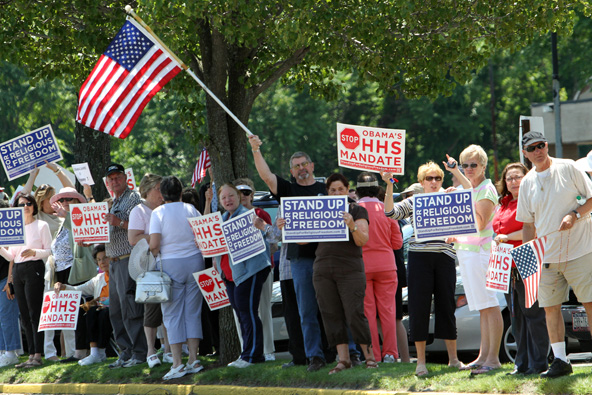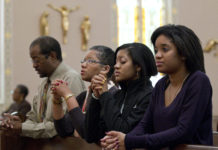
In the wake of the Supreme Court’s 1990 decision in Employment Division v. Smith, a broad, bipartisan coalition quickly formed to restore to federal law a robust understanding of religious freedom, which many believed Smith had severely attenuated. RFRA, as the bill was known, passed the U.S. House of Representatives by a voice vote, was adopted 97-3 by the U.S. Senate, and was signed into law by President Clinton on Nov. 16, 1993, its rapid and overwhelming passage a testimony to the strength of the pro-RFRA coalition.
Could such a coalition be re-assembled in light of various threats to religious freedom in the United States today? One would like to think so; but it’s not an easy case to make.
A distinguished rabbi, asked some months ago whether the RFRA coalition could be stitched together once more, suggested, sadly, that it would be like putting Humpty-Dumpty together again: “You want to know what happened to the RFRA coalition?” he asked a constitutional scholar. “I’ll tell you what happened: gay rights happened. It’s created an irresistible force against an immovable object.”
A Catholic bishop, a party to the same conversation, agreed, although his explanation for the demise of the old RFRA coalition was a bit broader. The protection of believers’ rights and consciences, he suggested, is in direct conflict with the ideology of the sexual revolution. That’s why the flashpoints in the current religious freedom battles have been abortion, contraception, sterilization and marriage.
I would add a third reason to the doubters’ skepticism: the willingness of religious intellectuals, including the Catholic Theological Society of America, to sacrifice a robust understanding of religious freedom on the altar of what they believe to be other social goods, including the expansion of the welfare state.
All of these factors conspire (in the sense of “work together”) to make it very difficult to re-assemble the bipartisan coalition that passed RFRA. Given the positions that the Democratic Party espouses on abortion and the full agenda of the gay insurgency, it’s not easy to see how Democrats sensitive to the dominant ideological and funding currents in their party would join in supporting strong religious freedom protections — especially when core Democratic constituencies think that “religious freedom” is a cover for “irrational bigotry” on matters of “reproductive rights” and “gay rights.” Then there are those Republicans who devoutly (or impiously) wish that “the social issues” would simply go away — a political cause far more difficult for them to advance within their camp than the pro-life/pro-marriage-rightly-understood cause among Democrats, but an obstacle to coalition-building nonetheless.
What the difficulties of re-assembling the old RFRA coalition suggest is that there has been a serious erosion of American political culture since the early 1990s — and at the root of that deterioration are profound confusions about the human condition. If everything in the human condition is plastic and malleable — if there are no givens — then claims to “my truth” on which you cannot legitimately impose “your truth” make sense. If, on the other hand, some things simply are — such as the human dignity of the unborn child or the nature of marriage — then we can learn what is right and wrong, what is true and false, what is conducive to human happiness or conducive to human misery, by pondering those givens and trying to discern the deep truths they teach us about ourselves and how we should live: truths that have been illuminated for centuries by biblical religion.
America began with the assertion of deep truths written into the human condition by “Nature, and Nature’s God” (as the Declaration of Independence put it). In an election season likely to be dominated by very practical (and important) questions about the economy, it will be well to keep a deeper, more searching set of questions in mind: Are we still a nation dedicated to certain moral truths? If so, how do we recover an ability to talk about those truths together?
And if not, what have we become?





![[VIDEO] Make Sunday feel like Sunday again](https://www.catholicsun.org/wp-content/uploads/2021/04/2021-YOUTUBE-BISHOP-MESSAGE-THUMBNAIL-ENGLISH-218x150.png)

